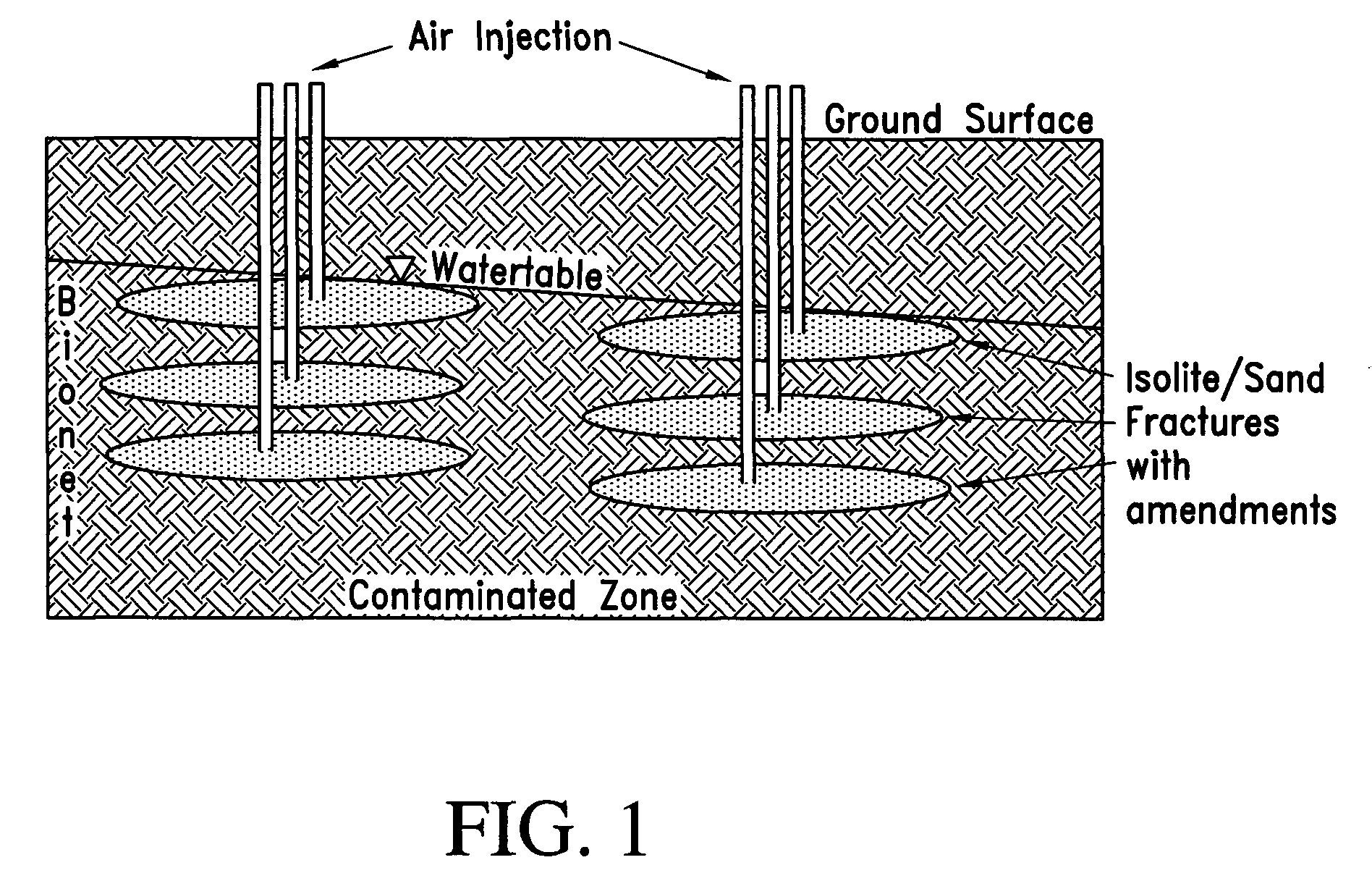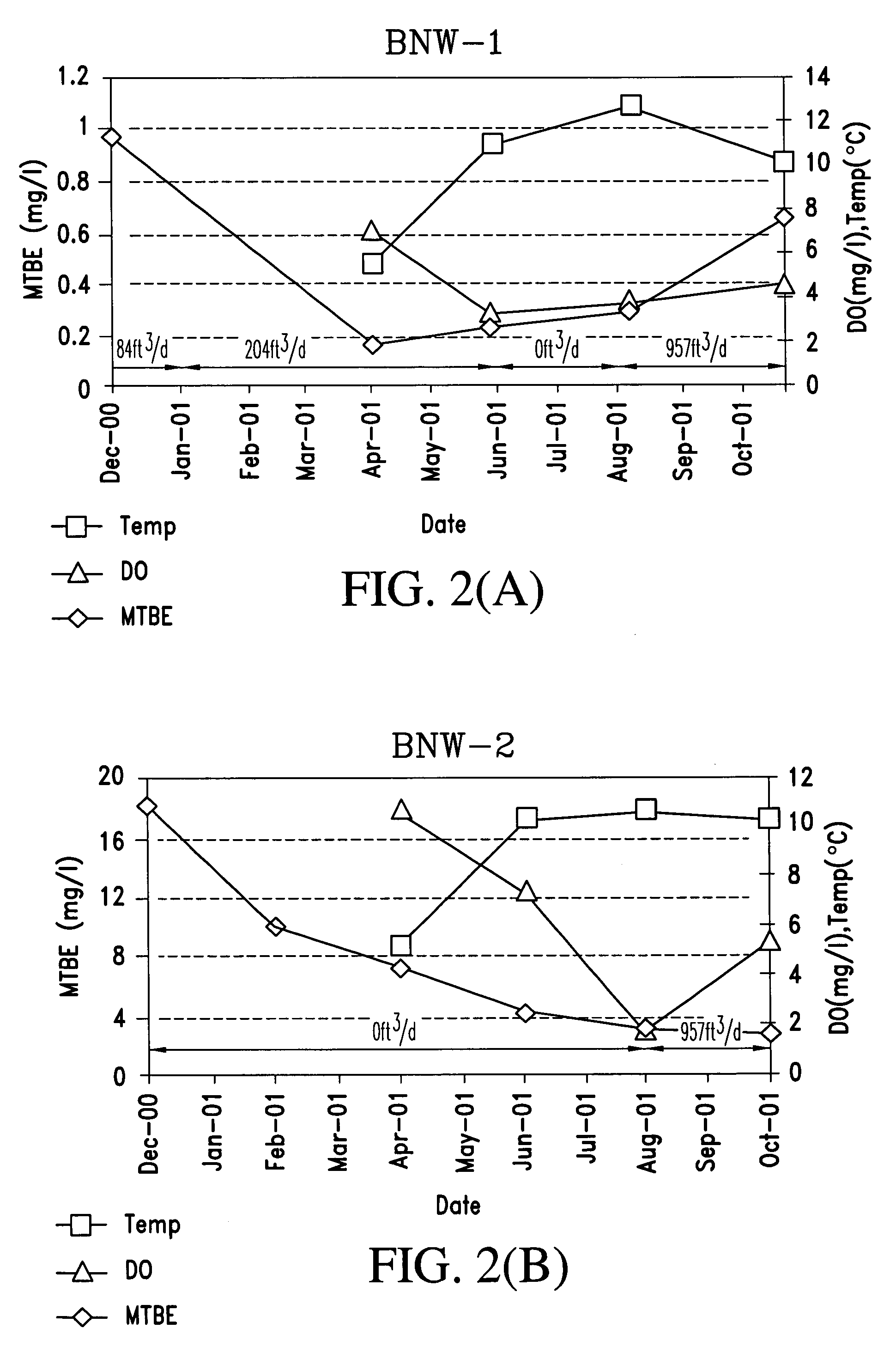Process for the biodegradation of hydrocarbons and ethers in subsurface soil by introduction of a solid oxygen source by hydraulic fracturing
a hydrocarbon and ether technology, applied in the direction of biological water/sewage treatment, chemistry apparatus and processes, wellbore/well accessories, etc., can solve the problem of a delay of effective biodegradation for a period of up to one year, and achieve the effect of effective degradation of contaminan
- Summary
- Abstract
- Description
- Claims
- Application Information
AI Technical Summary
Benefits of technology
Problems solved by technology
Method used
Image
Examples
Embodiment Construction
[0029]The solid oxygen source (SOS) used in the present invention is, as noted above, sodium percarbonate (Na2CO3.1.5H2O) coated with polyvinylidine chloride (PVDC) in the form of a granular material, preferably −2.36 mm. These granular particles or “mircocapsules” preferably have an average diameter within a range of 0.25 to 2.0 mm and more preferably within a range of 0.425 to 0.85 mm. Most preferably, all of the microcapsules are within the 0.25 to 2.0 mm range.
[0030]A suitable wall to core weight ratio for the microcapsules is 40:60 to 60:40, preferably, about 1:1 for those formed in the manner described below under the heading “Experimental.” Thinner walls produced in that manner have been found to release oxygen too quickly. However, sealing processes other than microencapsulation in the manner described below under the heading “Experimental” would allow use of a thinner wall, i.e., a lower wall to core ratio. Thus, the ratio of PVDC wall to sodium percarbon...
PUM
| Property | Measurement | Unit |
|---|---|---|
| diameter | aaaaa | aaaaa |
| diameter | aaaaa | aaaaa |
| weight ratio | aaaaa | aaaaa |
Abstract
Description
Claims
Application Information
 Login to View More
Login to View More - R&D
- Intellectual Property
- Life Sciences
- Materials
- Tech Scout
- Unparalleled Data Quality
- Higher Quality Content
- 60% Fewer Hallucinations
Browse by: Latest US Patents, China's latest patents, Technical Efficacy Thesaurus, Application Domain, Technology Topic, Popular Technical Reports.
© 2025 PatSnap. All rights reserved.Legal|Privacy policy|Modern Slavery Act Transparency Statement|Sitemap|About US| Contact US: help@patsnap.com



